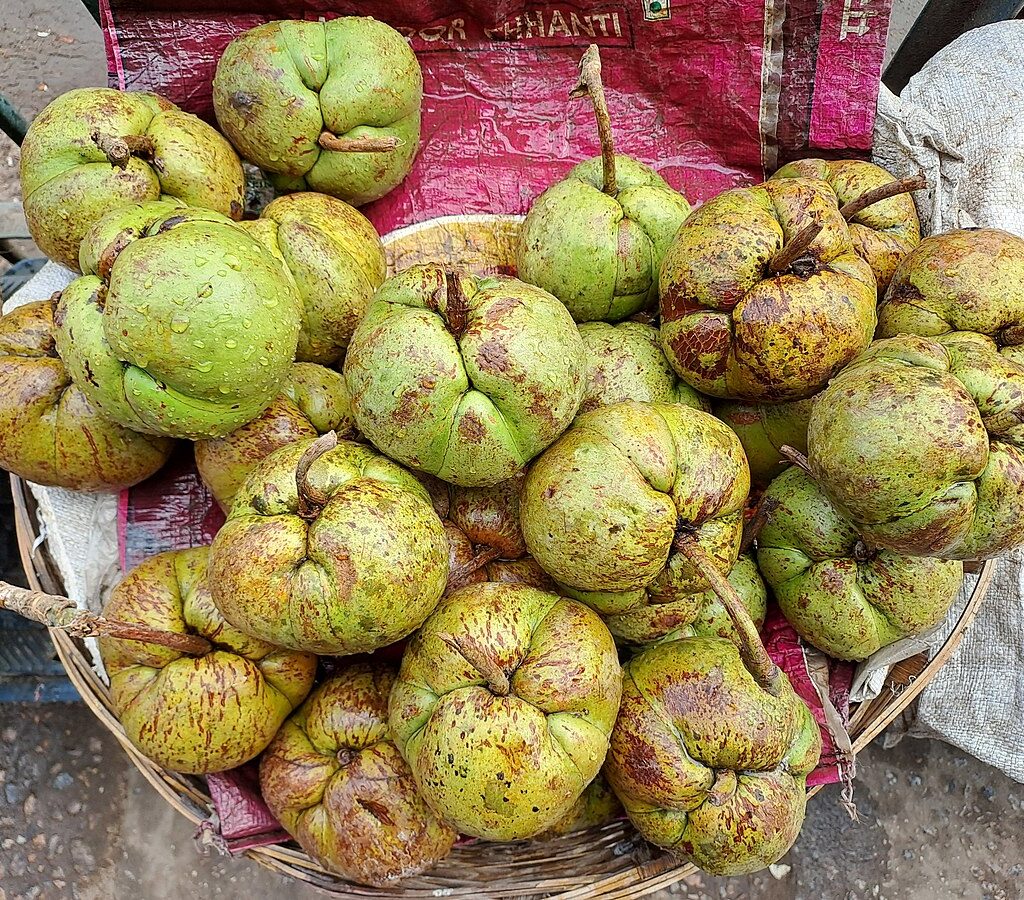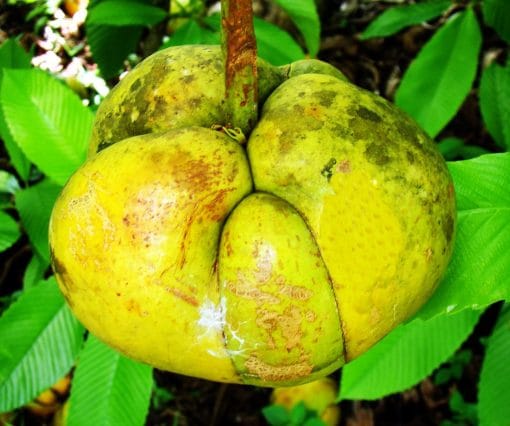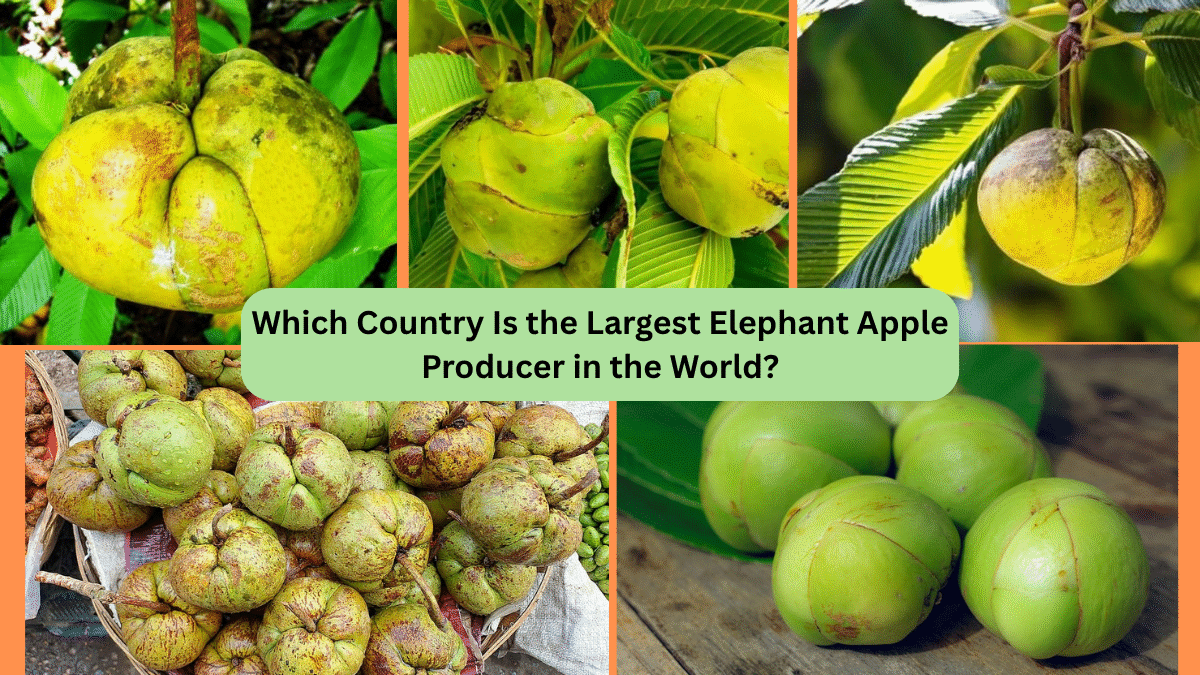Fruits are not just food; they carry centuries of tradition, ecological importance, and cultural symbolism. Among the lesser-known yet highly valued tropical fruits of South and Southeast Asia is the elephant apple (Dillenia indica). Native to the lush forests of the Indian subcontinent and parts of Southeast Asia, this unique, sour-sweet fruit is a culinary, medicinal, and ecological treasure. But where does it flourish most abundantly? India proudly holds the title of the largest elephant apple producer in the world.
Let’s explore what makes India the leader in elephant apple production and why this fruit is so significant in the region’s agriculture, culture, and biodiversity.
What is Elephant Apple?

The elephant apple is a tropical fruit produced by the tree Dillenia indica, belonging to the family Dilleniaceae. The tree is native to South and Southeast Asia, growing in humid forests, riverbanks, and plains. It’s a large evergreen or semi-evergreen tree with broad leaves, fragrant white flowers, and distinctive round, greenish-yellow fruits.
The fruit has a tough outer rind, enclosing juicy, aromatic, fibrous pulp and numerous seeds. The pulp is typically tart and sour but becomes pleasantly tangy and mildly sweet when ripened. Elephant apples are used in regional cuisines, herbal medicine, and even as food for wildlife, particularly elephants — hence the name.
Historical and Cultural Significance
The elephant apple holds deep cultural roots in India, particularly in the eastern and northeastern states like Assam, Odisha, West Bengal, Bihar, and Jharkhand. It has been mentioned in ancient Ayurvedic texts for its medicinal benefits and used in tribal communities for treating ailments ranging from digestive issues to fevers.
In folklore, the elephant apple tree was often associated with the forest spirits and considered sacred in many tribal traditions. The leaves and bark have long been used in traditional medicine, while the fruit has been a staple in rural kitchens and forest villages.
Where is Elephant Apple Grown?

The natural distribution of Dillenia indica covers:
- India (largest range and highest yield)
- Bangladesh
- Nepal
- Sri Lanka
- Southern China (Yunnan)
- Thailand
- Malaysia
- Myanmar
- Indonesia
While the tree grows naturally across much of South and Southeast Asia, commercial-scale cultivation and organized harvesting are most extensive in India.
Why India Leads the World in Elephant Apple Production
India’s dominance in elephant apple production is a result of several key factors:
Ideal Climate and Geography
Elephant apples thrive in humid, tropical, and subtropical climates with abundant rainfall and rich, alluvial soils. India, especially its northeastern and eastern states, provides these ideal growing conditions naturally. The states of Assam, West Bengal, Odisha, Jharkhand, Chhattisgarh, and Bihar account for the majority of the country’s elephant apple output.
Wild and Semi-Cultivated Growth
Unlike many commercial fruits, elephant apples are often harvested from wild trees growing in forests, village groves, and along riverbanks. India’s vast forested regions, especially in the northeast and east, are rich in naturally growing elephant apple trees, providing a steady supply of fruit without the need for extensive plantations.
Strong Culinary and Medicinal Demand
In India, elephant apple isn’t just a forest fruit — it’s an essential ingredient in regional dishes:
- Assamese cuisine uses it in tangy curries and chutneys like ou tenga.
- In Odisha, it’s cooked in mustard-based gravies or made into sweet-and-sour chutneys.
- Bengali households use it in fish curries and pickles.
- In Ayurveda and folk medicine, elephant apple is valued for its anti-inflammatory, digestive, and anti-diabetic properties.
This constant local demand ensures consistent harvesting and consumption, sustaining large-scale production.
Ecological Role and Wildlife Value
Elephant apples are a crucial part of the ecosystem, serving as an important food source for wild elephants, deer, monkeys, and birds in India’s forests. Protecting these trees and harvesting their fruits responsibly contributes to forest conservation and rural livelihoods in tribal areas.
Estimated Production in India

While exact global data on elephant apple production is scarce due to its wild and semi-cultivated nature, India is estimated to produce several thousand metric tons annually, far surpassing other countries where it grows sporadically or remains underutilized.
- Assam alone contributes about 35-40% of India’s total harvest.
- Other significant producing states include West Bengal, Odisha, and Jharkhand.
The fruit is typically harvested between September and December, depending on the region and climate.
Uses of Elephant Apple in India
Culinary Uses
- Curries: Cooked with fish or vegetables.
- Chutneys and pickles: Prepared with jaggery and spices.
- Juices and drinks: Blended for its cooling, digestive properties.
- Preserves and jams: Used as a sweet-sour spread.
Medicinal Uses
- Used in Ayurveda and folk medicine to treat digestive issues, fevers, coughs, inflammation, and skin conditions.
- The pulp, leaves, and bark have anti-diabetic, antimicrobial, antioxidant, and anti-inflammatory properties.
Wildlife Importance
- An important food for elephants, monkeys, and birds in India’s national parks and wildlife reserves.
- Helps in forest regeneration and seed dispersal.
Other Elephant Apple Producing Countries

Though India leads global production, several neighboring countries also grow elephant apple, albeit at much smaller scales:
- Bangladesh: Found in rural forests and used in local dishes.
- Nepal: Grown in the Terai and hilly regions for local consumption.
- Sri Lanka: Used in traditional medicine and occasionally in cooking.
- China (Yunnan province): Grown in limited pockets, primarily for medicinal uses.
- Thailand, Malaysia, Indonesia: Found in wild forests, with minimal commercial cultivation.
None of these countries match India’s volume, diversity of usage, or cultural importance associated with elephant apple.
Nutritional and Health Benefits
Elephant apples are packed with nutrients:
| Nutrient | Value per 100g |
|---|---|
| Calories | 56 kcal |
| Vitamin C | 80 mg |
| Dietary Fiber | 4.6 g |
| Iron | 2.4 mg |
| Calcium | 17 mg |
| Antioxidants | High |
Health benefits include:
- Boosting immunity
- Improving digestion
- Regulating blood sugar levels
- Reducing inflammation
- Supporting heart health
Market Potential and Export Opportunities

With the rising demand for nutraceutical and exotic tropical fruits worldwide, elephant apple holds considerable potential:
- Processed products like chutneys, pickles, jams, and health supplements are seeing growing interest in urban Indian markets.
- Niche international markets, particularly among the Indian diaspora in the USA, UK, Canada, and Gulf countries, are beginning to show interest in frozen or processed elephant apple products.
- As awareness of its health benefits and ecological importance grows, there’s potential for developing value-added products for export.
Conclusion
India’s distinction as the largest elephant apple producer in the world is a testament to its rich biodiversity, culinary traditions, and age-old relationship with forest ecosystems. While elephant apple remains a regional specialty today, it holds significant potential as a functional food and medicinal plant on the global stage.
As India continues to explore its untapped native fruit diversity and promote eco-friendly harvesting, elephant apple could soon become one of the country’s standout contributions to the world’s exotic superfood market.





Leave A Comment